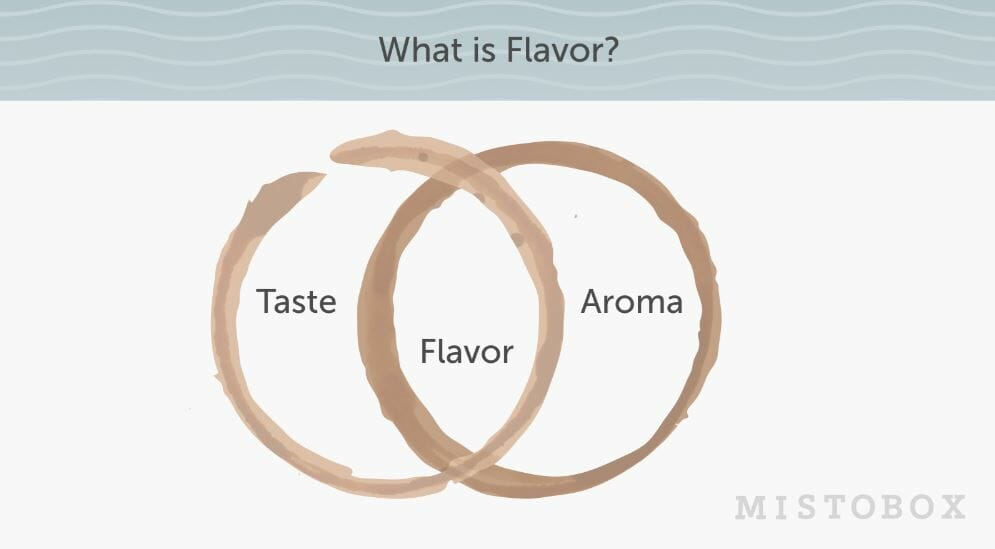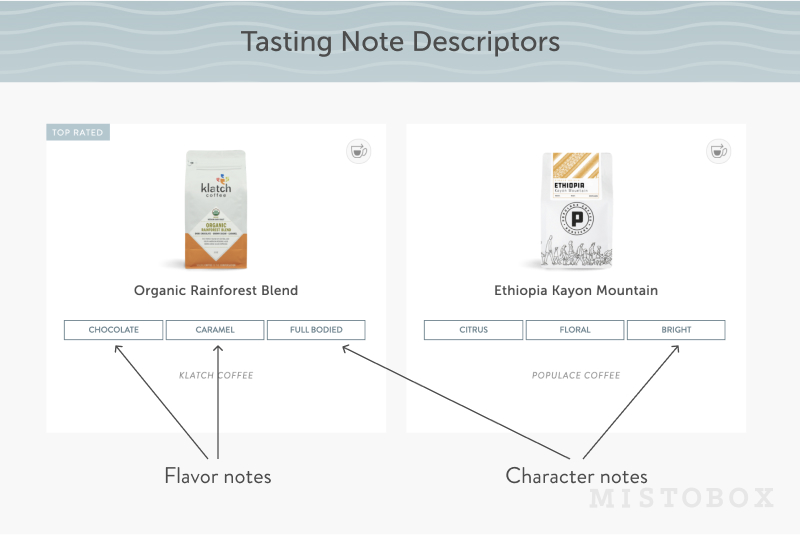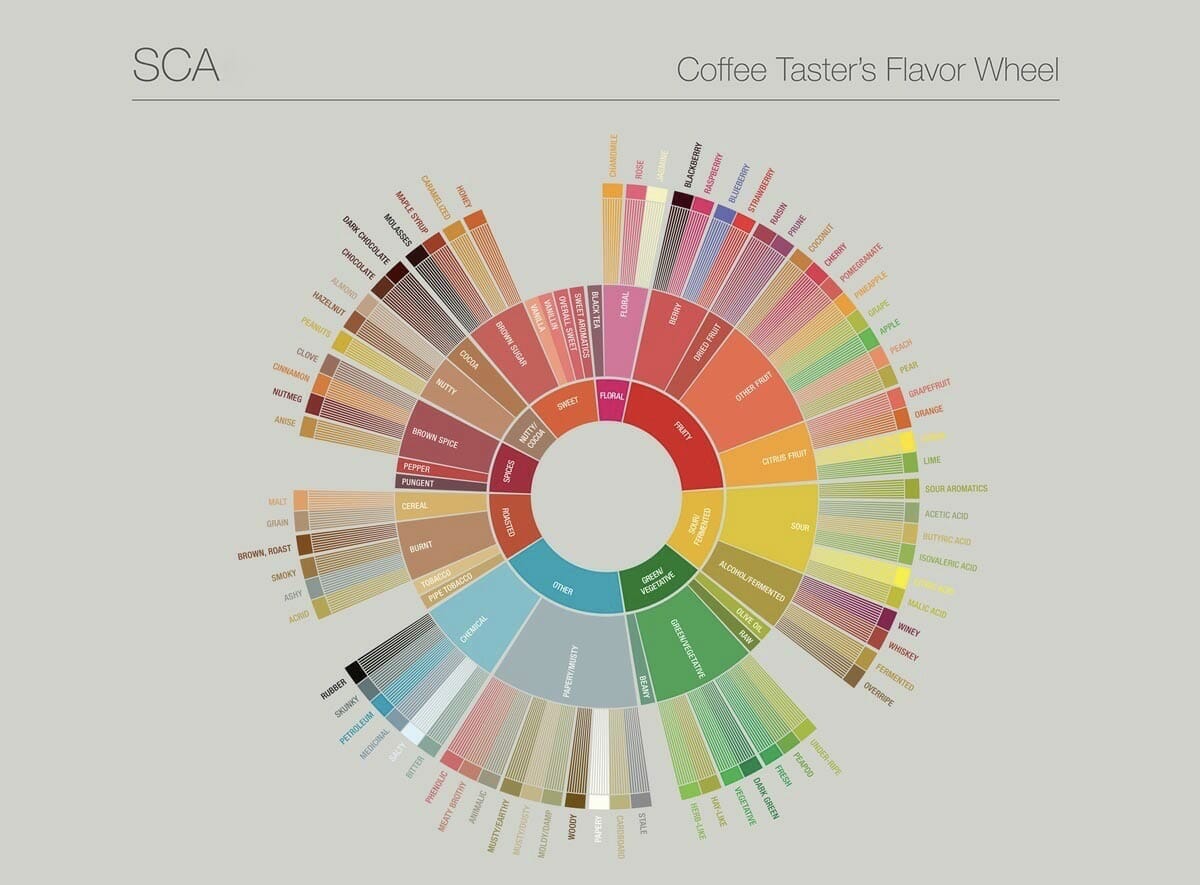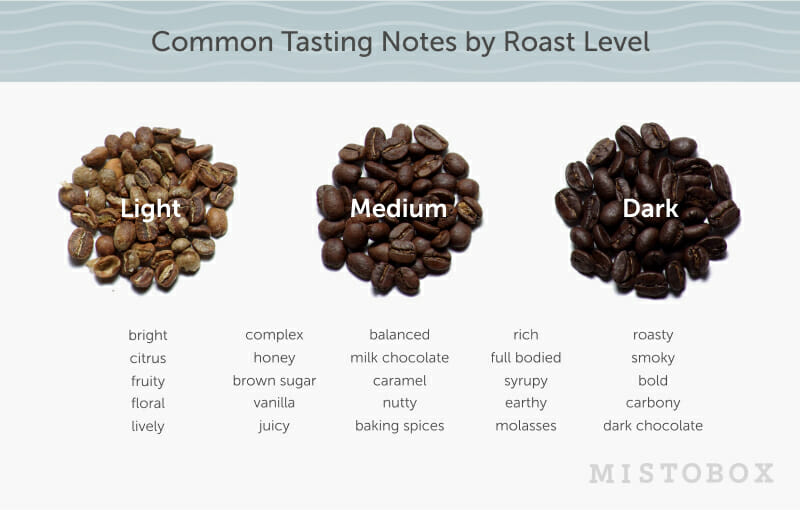Coffee is more than just a magical elixir that wakes us up and energizes the pursuit of our dreams. At MistoBox, coffee is an experience. Not only should coffee taste amazing, but that taste can tell part of a story that spans generations, continents, and cultures. Taste is the language of coffee and once you can understand it, you can be more descriptive about what you enjoy, choose coffees perfectly suited to your preferences, and more fully experience and appreciate the flavors within your cup. With specialty coffee, every sip is influenced by the particular environment it was grown in, the plant cultivar, and how it was processed, roasted, and brewed. It sounds complicated, but we’re going to break it down to help you better appreciate each coffee you’re drinking and maximize its potential for you. In the end, the taste is the most important part of a coffee’s story because it’s a summary of its journey from seed to cup. If you can better interpret the language of taste it will add a deeper level of appreciation to your daily brew.
Defining Taste, Aroma, and Flavor:
Taste: Taste is the sense experienced by the tongue and describes the sensations of saltiness, sweetness, sourness, bitterness, and savoriness.
Aroma: Aroma is the sense of smell experienced through the nose (orthonasal) and through the back of the mouth where the nasal and mouth cavities are interlinked (retronasal). The majority of what we experience as flavor is derived from the aroma. Aroma plays a dominant role in differentiating flavors.
Flavor: the combination of both aroma and taste.

What are Coffee Tasting Notes?
Tasting notes or “flavor notes” are a taster’s written description about the aroma, taste, and character of a coffee. Although they might sound obscure at times, tasting notes are written to help guide our taste buds towards or away from coffees we may like or dislike. It is important to remember that none of these tasting notes are the result of adding flavor to the coffee- they’re just natural expressions of the plant still available in the beverage form. At MistoBox, we only partner with roasters whose coffee’s are just that- coffee!

The character of a coffee is an overall way to describe a coffee’s personality based on acidity, body, and flavor. Examples include full-bodied, rich, complex, bright, lively, balanced, smooth, etc. The 3rd taste descriptor for every MistoBox coffee describes the overall character or personality of that coffee.

Where do coffee flavors come from?
If you’ve spent some time browsing our 500+ specialty coffees, you’ll have seen that there appear to be endless variations and ways to describe the taste and flavor of coffee. To better understand where all of these flavors come from we have to first understand what coffee is. Coffee, the beverage, is made from coffee plants that produce cherries. What we call coffee beans are actually the roasted seeds that are removed from these coffee cherries. Since coffee beans are the seeds of a fruit, they naturally contain fruity flavors that can be enhanced or altered through different processing and roasting methods.

Through the coffee fermentation and roasting process, different chemical compounds are naturally created that are similar or identical to chemical compounds found in other fruits or foods. When someone tastes a hint of lemon, they might be identifying a citrus flavor compound that also exists in lemons. These compounds are called esters and different esters can be found in different coffee plants. A coffee’s environment, the way it is processed, how it is roasted, and brewed can all affect the way these tastes and aromas present themselves because they affect the chemistry of the coffee beans. So when we’re tasting notes of “blueberry” in a coffee, we’re experiencing either the same or very similar compounds that are in actual blueberries.
The Coffee Taster’s Flavor Wheel

In an effort to catalog and organize the flavors often found in coffee, the Specialty Coffee Association (SCA) and World Coffee Research created the Coffee Taster’s Flavor Wheel. While it may at first look intimidating, the SCA flavor wheel is a helpful tool to guide you as you start trying to identify flavor notes in coffee. Start at the center with the most general descriptors like “nutty” and move outward to more specific options like “almond.” Think of the flavor wheel like a map, the coffee is your starting point, and the roaster’s tasting notes as your possible destination. Can the wheel help you get from point A to point B? It will take some practice and you’ll need to build a coffee tasting vocabulary, but over time you will be able to better identify what you’re tasting in your cup.
What do tasting notes tell us about a coffee?
Because tasting notes are descriptions about the aroma, taste, flavor, and character of a coffee, once you know which tasting notes you enjoy you’ll be able to find new coffees you’ll love.
Tasting notes of citrus, fruit, and floral (lime, tangerine, orange blossom, jasmine, raspberry) usually describe coffees that are roasted lighter to highlight the pleasant acidity of a coffee. We describe the character of these coffees as light, bright, lively, vibrant, juicy, or complex. We will go into deeper detail on the nuance of acidity later in the series. If you like coffee with these notes, you can find a plethora of options to try in our shop:
Tasting notes of chocolate, caramelized sugars, and roasty (dark chocolate, caramel, toasted almonds, roasty, smoky, tobacco, malt, baking spices, molasses) usually describe coffees that are roasted darker (roasted for longer at higher temperatures) to soften or mute acidity and accentuate body, balance, and richness. We describe these coffees as more traditional, classic, or approachable. These coffees are often described as balanced, full-bodied, rich, or bold. If you lean towards these kind of tasting notes, you can browse more coffees here:

Why can’t I pick out some of these flavor notes?
Tasting takes practice (fortunately drinking coffee is delicious and can be done daily). Coffee with a flavor note of melon is characterized by a hint of sweetness and a fruity quality reminiscent of something like a cantaloupe or honeydew. It’s not going to taste like a fresh, juicy melon. It’s still coffee, but subtly that fruit you are sensing might make you think of a melon. Also, keep in mind that tastes are subjective. Even real melons taste different based on where they’re from, how in season they are, or the level of ripeness so what tastes like melon to the taster might not taste like the melon you know. What you taste will always have a personal quality because your own reference points for tasting will be different than someone else’s. Ultimately, tasting notes are designed to be a guide to give us a better idea of what different coffees have to offer and how they relate to each other. They are not meant to be the only correct expressions your coffee can have. Tasting is not a test you can fail, but it is something you can get better at with practice. At the end of the day tasting notes are meant to guide us towards elements of coffee that are more pronounced and direct us to a coffee that we’re going to enjoy and appreciate.
Learn more about coffee and taste with our series check out our specialty coffee article, guide to coffee cupping or learning what influences coffee flavors?

